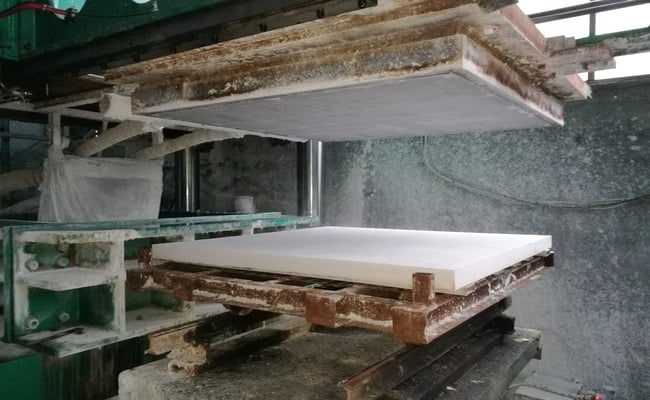Key Takeaways
- Discover the key differences between calcium silicate boards and cement boards.
- Explore their properties, applications, and suitability for various construction projects.
- Learn how to choose the right board type for your specific needs.

Introduction
In construction, selecting the right materials is crucial for ensuring durability, safety, and functionality. Two commonly used materials are calcium silicate boards and cement boards, both known for their strength and versatility. While they may seem similar, they have distinct properties that make them suitable for different applications.
As someone with over 12 years of experience assisting clients with passive fire protection projects, I’ve often encountered questions about these two materials. This article provides a clear comparison to help you make an informed decision. If you’re new to calcium silicate boards, check out What is Calcium Silicate Board?
Understanding Calcium Silicate and Cement Boards
Definition and Composition of Calcium Silicate Board
Calcium silicate boards are lightweight, fire-resistant materials made from a blend of silica, lime, and fibers, produced through a high-temperature, high-pressure autoclaving process. These boards are ideal for insulation and fireproofing applications.

Definition and Composition of Cement Board
Cement boards consist of cement, sand, and fibers, making them denser and heavier. They are known for their durability, strength, and excellent performance in wet environments, such as bathrooms and kitchens.
Key Properties and Characteristics
The table below highlights the key differences in properties and characteristics between the two board types:
| Aspect | Calcium Silicate Board | Cement Board |
|---|---|---|
|
Physical Properties
|
Lightweight, suitable for non-load-bearing structures
|
Heavier, suitable for load-bearing applications
|
|
Fire Resistance
|
Excellent, often exceeding 2 hours in fire-rated scenarios
|
Moderate, less effective for prolonged exposure
|
|
Moisture Resistance
|
Good for humid environments but degrades in water
|
Superior, ideal for wet environments
|
|
Durability
|
Long lifespan but brittle under mechanical stress
|
Robust, performs well in high-impact environments
|
Advantages and Disadvantages
Advantages of Calcium Silicate Boards
- Lightweight and easy to install.
- Superior fire resistance and thermal insulation.
- Excellent acoustic insulation properties.
Disadvantages of Calcium Silicate Boards
- Higher cost compared to cement boards.
- Brittle under high mechanical stress.
Advantages of Cement Boards
- Affordable and widely available.
- High strength and resistance to mechanical damage.
- Outstanding water resistance, ideal for wet or humid conditions.
Disadvantages of Cement Boards
- Heavier, making installation more labor-intensive.
- Limited thermal and fire insulation compared to calcium silicate boards.

Applications in Construction
| Application | Calcium Silicate Board | Cement Board |
|---|---|---|
|
Residential
|
Fireproof walls and ceilings
|
Bathrooms, kitchens, and flooring
|
|
Commercial
|
Partition walls, fireproofing, and insulation
|
Exterior cladding, heavy-duty flooring
|
|
Industrial
|
High-temperature insulation and fireproofing
|
Water-resistant backer boards
|
Selecting the Right Board Type
| Requirement | Recommended Material | Reason |
|---|---|---|
|
Fireproofing
|
Calcium Silicate Board
|
Superior fire resistance
|
|
Wet or Humid Environment
|
Cement Board
|
Excellent water resistance
|
|
Structural Strength
|
Cement Board
|
Denser and better for load-bearing
|
|
Lightweight Application
|
Calcium Silicate Board
|
Easier to transport and install
|
By aligning your material choice with these requirements, you can ensure both safety and efficiency in your project.
Conclusion
Calcium silicate boards and cement boards each have unique strengths that make them essential in construction. While calcium silicate boards excel in fire resistance and thermal insulation, cement boards are better suited for water resistance and structural applications. By understanding their properties and aligning them with your project’s needs, you can make an informed choice that ensures long-term durability and safety.
Frequently Asked Questions (FAQ)
Which board is better for fireproofing?
Calcium silicate boards are superior due to their excellent fire resistance.
Which board performs better in wet environments?
Cement boards are better suited for areas with high moisture exposure.
Are calcium silicate boards more expensive than cement boards?
Yes, calcium silicate boards generally have a higher upfront cost but may offer better long-term value.
Can these boards be used interchangeably?
While they have some overlap, their unique properties make them better suited for specific applications.
This comprehensive comparison aims to clarify the differences between calcium silicate boards and cement boards. At FireSafe, we are committed to providing high-quality calcium silicate boards tailored to your project needs. If you have further questions or need assistance, feel free to reach out for a consultation or a no-obligation quote.

